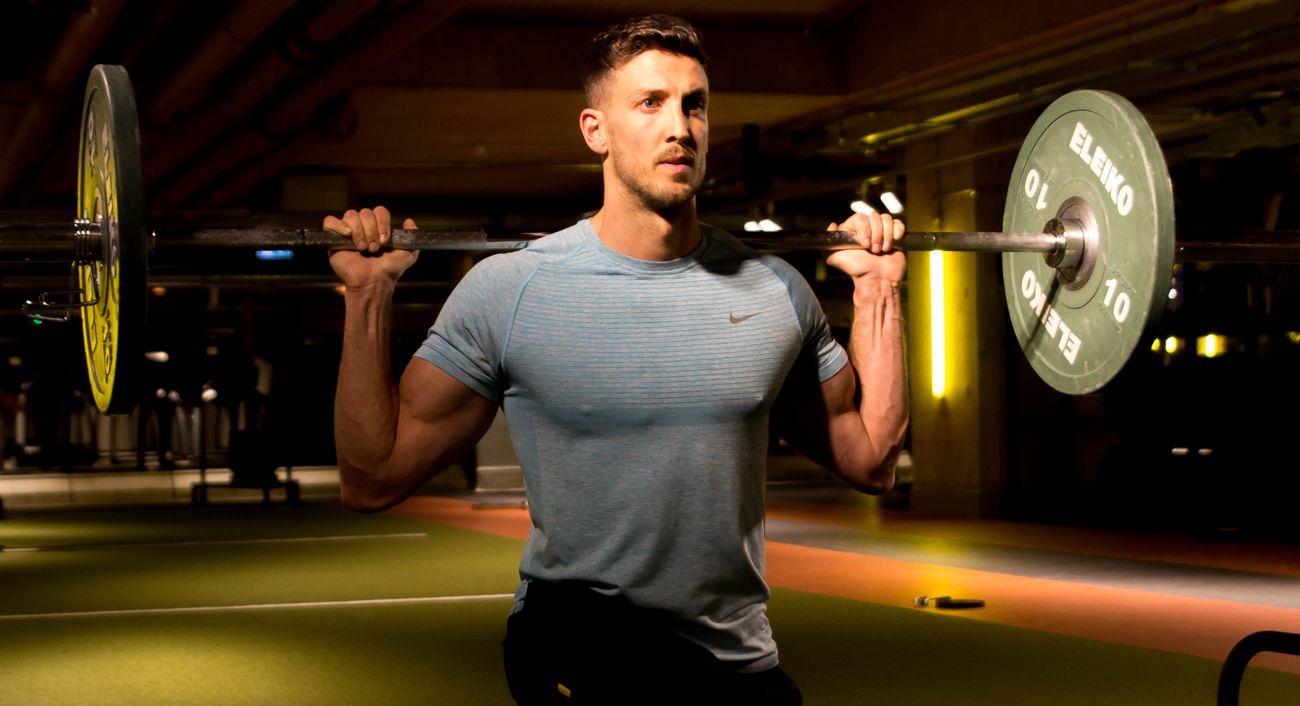If you ever needed another reason not to skip leg day, then listen up
Training your legs will boost your full-body muscle growth – so ensure you’re getting sufficient squat time in your programme.
Ray Buckton, personal trainer at Gymbox Farringdon says:
“Training legs should be THE most important part of your training programme, no matter what your goal is.
“Firstly, the most important thing to understand is that the biggest muscle groups in your body are all found in your lower half.”
This makes complete sense from an evolutionary and biological perspective, Buckton states.
“If you think about it – leg muscles have evolved to be weight-bearing. They carry us around, enable us to walk, run and jump.
“Try doing those things on your hands.”
 Credit: Gymbox
Credit: GymboxWhen taken individually, your lower body muscles still outshine those of your torso.
“Your glutes, hamstrings, gastrocnemius (calf) and quads all dwarf the muscle groups found elsewhere in your body in terms of muscle fibre quantity and density.
“This essentially means that there are more muscle fibres found in your lower body than anywhere else.”
As a result, Buckton describes how leg training demands more from your body.
“The more muscle fibres, the more fuel required. More fuel means your body needs to raise its metabolism to provide the required energy.
“Your body then churns through energy stores, burning more calories and fat and improving insulin sensitivity.
In layman’s terms, the more sensitive you are to insulin, the better your ability to use the glucose from carbs as energy. This is huge news if you want to stay lean, as it means those simple sugars you’re consuming are less likely to be shuttled into fat stores.
Squats shed fat
“It’s incredibly important to remember your body is one whole organism”, Buckton states.
“Often when it comes to training, we separate the different body parts. But everything in your body is linked. For example, if you have low blood pressure, this low pressure will affect every blood vessel in your body.”
That bucket load of calories you burned from squatting heavy pays off in this regard.
“When you have a higher metabolism from training your legs hard, you will potentially be burning body fat from all over your body.
“If you want to be able to see your abs, you need to drop your body fat.”
You may be thinking ‘how does training my legs build a bigger chest or arms?’
Buckton states that you should pay attention to the size of the leg muscles again for this.
“Let’s go back to the fact that the biggest muscle groups in your body are in your legs.
“This means that when you’ve destroyed your lower body with a monster workout, there will be a lot of damaged muscle fibres that need repairing.”
Your body repairs muscle fibres by releasing more natural growth hormone and testosterone and signalling for increased protein synthesis.
The key compounds
Compound exercises prompt the highest rate of muscle fibre recruitment, delivering the biggest bang-for-your-buck. The best examples of lower body compound lifts include:
- Squats
- Deadlifts
- Leg Press
- Hip Thrusts
- Barbell Lunge
- Barbell Step-Up
By including a leg training split such as this into your programme, Buckton says “you will be optimising your release of the necessary hormones needed to grow”.
“This testosterone won’t just hang out in your legs because the body is one whole organism.”
If you’ve been hitting your upper body muscles with sufficient volume, the testosterone and growth hormone output from your heavier leg lifts will only help these areas grow, too.










































